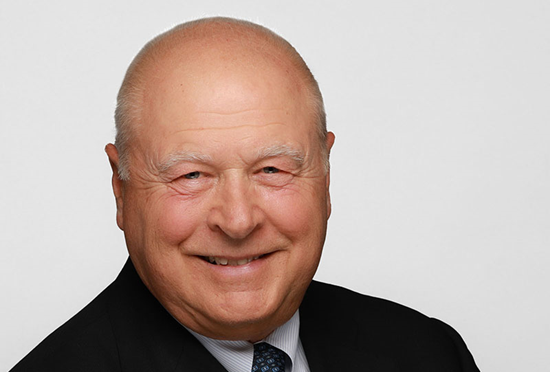Marc Bayle, European Central Bank, interview

How would you assess the preparation during 2013 and 2014 for next year’s launch of T2S?
We are very satisfied with the progress made. We have managed to meet the deadlines and are on schedule to go live with the T2S platform next year as planned. The development stage of the project is finished and we are in the delivery mode.
We have just completed part of the quality acceptance testing and are ready for user testing
What challenges have you encountered during implementation?
One of the main technical challenges in implementing T2S was a flaw in the design of the platform. It was difficult to correct it and it could have delayed the project from going live on time. But we managed to find consensus in the T2S governance due to the strong commitment by all stakeholders.
An updated version of the software will be available mid-December so that we continue to be on schedule. We are working closely with national central banks and central securities depositories (CSDs) in order to define the pace, which allows them to adapt to and prepare for the golive as comfortably as possibly.
Did the different European settlement system models hinder the progress of T2S?
At the beginning of the project it was challenging to find a compromise between the differing settlement models in European markets. But we decided to make T2S a truly European securities settlement model and as efficient and state-of-the-art as possible. One of the advantages of T2S is that Europe will have a single securities settlement engine, which can be used via a single entry point – bringing economies of scale.
We expect that T2S will bring more competitiveness in the European market as market participants can enter new markets in Europe more easily. This is a potential source of saving, which is why major European banks have supported the project from the start. A key issue for market participants at the moment is the access to and mobility of collateral. In many respects T2S is solving the problem of efficient collateral management for market participants in Europe as it will allow them to use and reuse collateral efficiently.
They will have full overview of their collateral and will be able to move it with the use of a single instruction. T2S also allows banks to customise and automate the use of collateral to obtain the liquidity necessary for real-time settlement needs. This is the auto-collateralisation facility, a credit operation that is triggered when a buyer does not have sufficient funds to settle a securities transaction.
The credit provided can be secured using either the very same securities that are being bought or other securities already held by the buyer. At the end of the business day, all auto-collateralisation operations are reimbursed to avoid an extension of overnight credit.
Is the fact CSDs are scheduled to join T2S in four stages a concern for market participants?
We would probably have liked for the migration to be bit shorter but we needed to accommodate the wishes and needs of market infrastructures using T2S as platform. Migrating 24 markets at once would have been extremely complex and risky. I think that it was the best option to divide the migration into four phases. In the end there is a distribution of risk, while optimising efficiency, as we are migrating larger European markets separately in different waves.
Do you think additional regulation will be needed once the European market is entirely operational under T2S?
The settlements landscape in Europe will look completely different. Target and later T2S enabled banks to manage cash in euros efficiently. When we move to T2S it will revolutionise how banks organise securities settlement and collateral management. Tremendous opportunities to access new markets in Europe will open up and market participants involved in this domain will need to reconsider and adapt their strategies.
Each one of them has to define their winning strategy, which will differ. It will be interesting to have the same conversation in five years’ time. Whether new regulation is needed, is a question we will face after complete migration. The border between the functions of sub-custodians and CSDs are already getting blurry.
How are the custody chains going to change as a result of T2S?
T2S will definitely change the way the investors and possibly issuers use custody services. A good analogy is the elimination of European currency trades inside the euro area as a result of the introduction of the euro. In Europe the market infrastructure is very fragmented.
Therefore foreign investors have to use more than one entry point if they intend to invest in more than one country in domestic conditions. After T2S is in place it will be very easy for an American investor, for example, to access numerous markets in Europe at once like a unique domestic market.
Custodians will also need to adapt to meet their clients’ needs. It is likely that some services will no longer be needed – at the least, some services related to settlement will be simplified or will become irrelevant.
Do you think more players will follow in BNY Mellon’s footsteps and set up their own CSD?
Custodians will have to adapt their strategy according to their priorities – one way to adjust would be to set up your own CSD. I do not expect, however, that this will develop into a trend. So far other custodians have not gone down this route and although it is not excluded. T2S is expected to bring competition between CSDs – provided that this competition works there will not be many new entrants.
What will be the impact of the switch to T+2?
T2S has created a need for a harmonised settlement period across Europe. Within the same settlement engine it is not possible for some markets to operate under the T+3 and other under the T+2 rule as this would create frictions.
We pushed for the CSD Regulation
From a T2S perspective it is an essential element linked to several T2S post-trade harmonisation activities, one of them being T+2.
Found this useful?
Take a complimentary trial of the FOW Marketing Intelligence Platform – the comprehensive source of news and analysis across the buy- and sell- side.
Gain access to:
- A single source of in-depth news, insight and analysis across Asset Management, Securities Finance, Custody, Fund Services and Derivatives
- Our interactive database, optimized to enable you to summarise data and build graphs outlining market activity
- Exclusive whitepapers, supplements and industry analysis curated and published by Futures & Options World
- Breaking news, daily and weekly alerts on the markets most relevant to you




